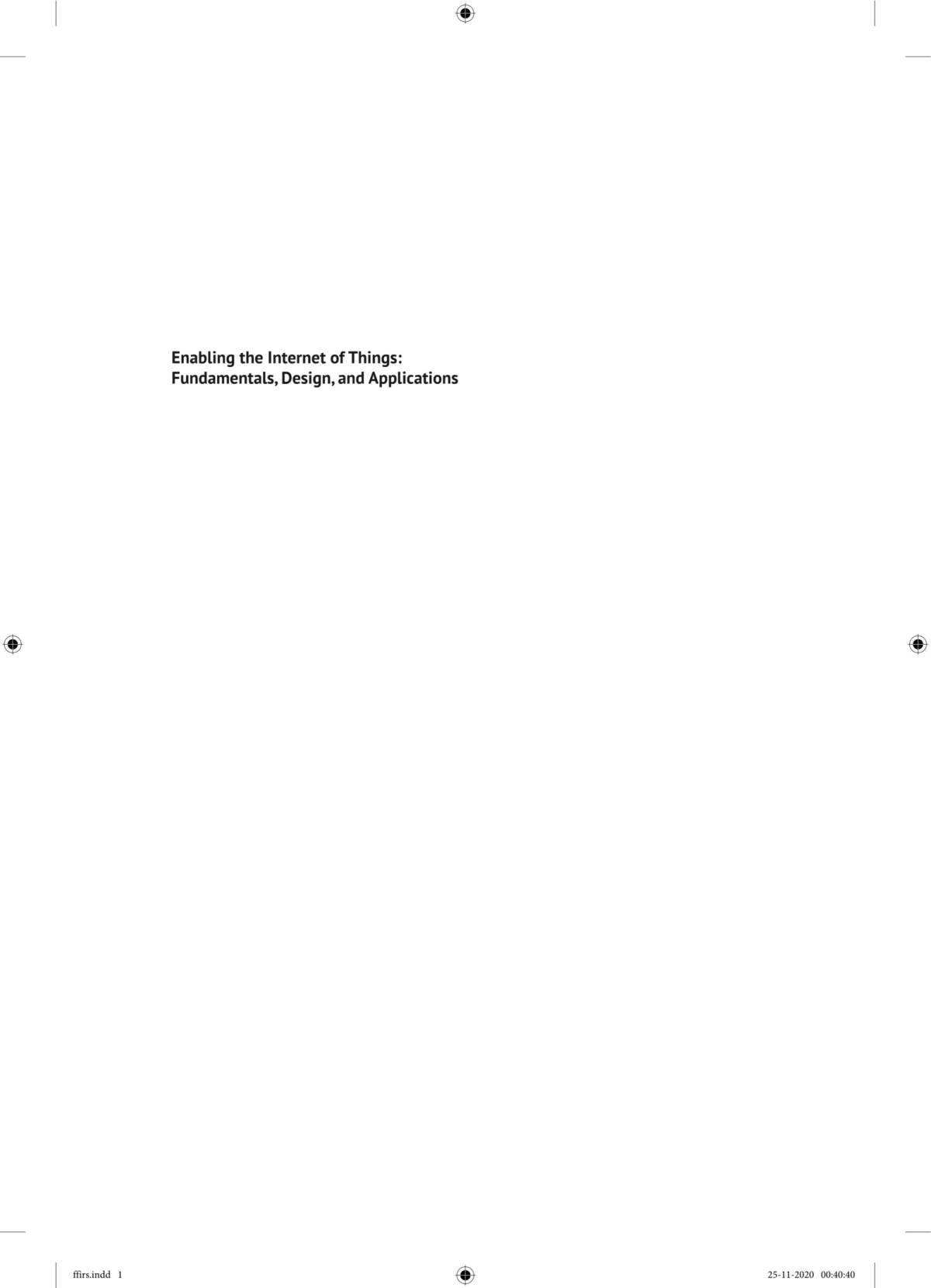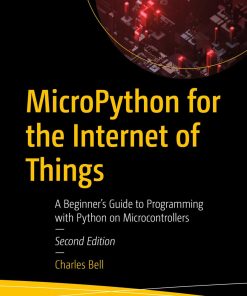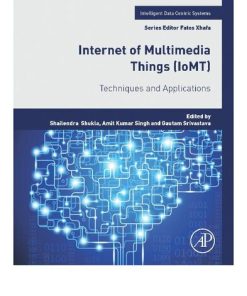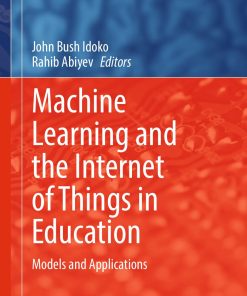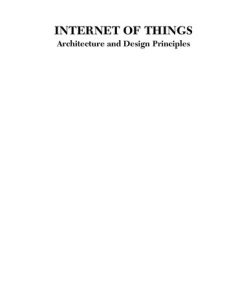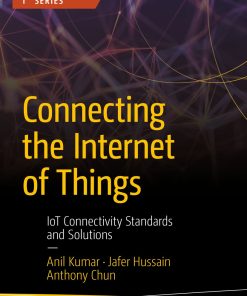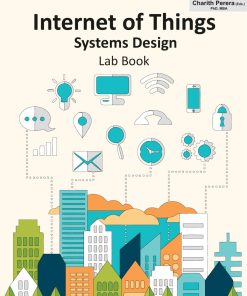Enabling the Internet of Things: Fundamentals, Design and Applications 1st Edition Muhammad Azhar Iqbal
$50.00 Original price was: $50.00.$25.00Current price is: $25.00.
Enabling the Internet of Things: Fundamentals, Design and Applications – Ebook Instant Download/Delivery ISBN(s): 9781119701255,1119701252
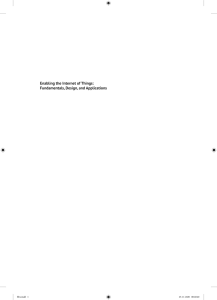
Product details:
- ISBN-10 : 1119701252
- ISBN-13 : 978-1119701255
- Author(s): Muhammad Azhar Iqbal, Sajjad Hussain, Huanlai Xing, Muhammad Ali Imran
Enabling the Internet of Things: Fundamentals, Design, and Applications delivers a comprehensive starting point for anyone hoping to understand the fundamentals and design of Internet of Things (IoT) systems. The book’s distinguished academics and authors offer readers an opportunity to understand IoT concepts via programming in an abstract way. Readers will learn about IoT fundamentals, hardware and software components, IoT protocol stacks, security, IoT applications and implementations, as well as the challenges, and potential solutions, that lie ahead.
Readers will learn about the social aspects of IoT systems, as well as receive an introduction to the Blockly Programming Language, IoT Microcontrollers, IoT Microprocessors, systems on a chip and IoT Gateway Architecture. The book also provides implementation of simple code examples in Packet Tracer, increasing the usefulness and practicality of the book. Enabling the Internet of Things examines a wide variety of other essential topics, including:
- The fundamentals of IoT, including its evolution, distinctions, definitions, vision, enabling technologies, and building blocks
- An elaboration of the sensing principles of IoT and the essentials of wireless sensor networks
- A detailed examination of the IoT protocol stack for communications
Table contents:
1 Internet of Things (IoT) Fundamentals 1
1.1 Introduction 1
1.2 Evolution of IoT Concept 2
1.3 IoT Vision 3
1.4 IoT Definition 5
1.5 IoT Basic Characteristics 6
1.6 IoT Distinction 7
1.6.1 IoT Versus Embedded Systems 7
1.6.2 IoT Versus M2M 7
1.6.3 IoT Versus CPS 7
1.6.4 IoT Versus WSN 8
1.6.5 IoT Versus WoT 8
1.7 IoT General Enablers 9
1.7.1 Identification and Sensing Technologies 10
1.7.2 Wireless Communication and Networking 11
1.7.3 Aggregation Standardization 14
1.7.4 Augmented Intelligence 14
1.7.5 Augmented Behavior 15
1.8 IoT Architectures 16
1.8.1 Three-layer IoT Architecture 17
1.8.1.1 Perception Layer 17
1.8.1.2 Network Layer 18
1.8.1.3 Application Layer 18
1.8.2 Five-Layer IoT Architecture 19
1.8.2.1 Object (Perception) Layer 19
1.8.2.2 Object Abstraction (Network) Layer 19
1.8.2.3 Service Management (Middleware) Layer 19
1.8.2.4 Application Layer 19
1.8.2.5 Business Layer 19
1.8.3 Six-layer Architecture 20
1.8.3.1 Focus Layer 21
1.8.3.2 Cognizance Layer 21
1.8.3.3 Transmission Layer 21
1.8.3.4 Application Layer 21
1.8.3.5 Infrastructure Layer 21
1.8.3.6 Competence Business Layer 21
1.8.4 Seven-layer Architecture 21
1.8.4.1 Layer 1: Things Layer 21
1.8.4.2 Layer 2: Connectivity 21
1.8.4.3 Layer 3: Edge/Fog Computing 22
1.8.4.4 Layer 4: Data Accumulation 23
1.8.4.5 Layer 5: Data Abstraction Layer 23
1.8.4.6 Level 6: Application Layer 23
1.8.4.7 Layer 7: Collaboration and Processes 23
1.9 Advantages and Disadvantages of IoT 23
Review Questions 23
References 25
2 IoT Building Blocks – Hardware and Software 29
2.1 IoT Building Blocks 29
2.2 The Smart Things 29
2.2.1 Smart Thing Sensor 30
2.2.2 Smart Thing Communicator 31
2.2.3 Smart Thing Actuator 31
2.2.4 Smart Thing Controller 32
2.2.4.1 Microcontroller (MCU) 32
2.2.4.2 Development Boards 32
2.2.4.3 Packet Tracer and MCUs 33
2.2.5 Smart Thing Capabilities 36
2.3 The IoT Gateway 38
2.4 Network Infrastructure 39
2.5 IoT Cloud 39
2.5.1 Virtual Resource Pool 39
2.5.2 Application Server 39
2.5.3 Database Servers 40
2.5.4 Load-balancing Servers 41
2.6 IoT Analytics 41
2.6.1 IoT Analytics – Tools and Techniques 42
2.6.2 IoT Analytics Life Cycle 43
2.7 IoT Applications 43
Review Questions 43
References 45
3 Sensing Principles and Wireless Sensor Network 49
3.1 Sensor Fundamentals 49
3.2 Sensor Classification 51
3.2.1 Simple (Direct) Sensor Versus Complex Sensor 51
3.2.2 Active Sensors Versus Passive Sensors 51
3.2.3 Contact Sensors Versus Noncontact Sensors 52
3.2.4 Absolute Sensors and Relative Sensors 52
3.2.5 Digital Sensors Versus Analog Sensors (Based on Output) 52
3.2.6 Scalar Sensor Versus Vector Sensors (Based on Data Types) 52
3.3 Anatomy of Sensors 52
3.4 Physical Principles of Sensing 53
3.4.1 Capacitance 53
3.4.1.1 Examples of Capacitive Sensors 55
3.4.2 Magnetism and Induction 57
3.4.2.1 Magnetic Sensing Examples 59
3.4.3 Electric Resistance and Resistivity 60
3.4.3.1 Resistive Sensor Applications 61
3.4.4 Piezoelectric Effect 61
3.5 Use of Basic Sensing Principles in RFID Technology 61
3.6 Actuators 62
3.7 Wireless Sensor Networks (WSNs) 63
3.7.1 WSN Architecture 63
3.7.2 Types of WSNs 64
3.7.3 General Characteristics of WSNs 64
3.7.4 Protocol Stack of WSNs 65
3.7.4.1 Physical Layer 65
3.7.4.2 Data Link Layer (DLL) 66
3.7.4.3 Network Layer 68
3.7.4.4 Transport Layer 68
3.7.4.5 Application Layer 69
3.7.4.6 Cross-layer WSN Protocols 69
3.7.5 WSN Operating Systems 69
3.7.5.1 WSN OS Design Issues 71
Review Questions 72
References 72
People also search:
the future of connectivity enabling the internet of things
berec report on enabling the internet of things
enabling the internet of things fundamentals design and applications pdf
enabling technologies for the internet of things
enabling technologies for the internet of health things
is the internet of things good or bad
what are iot enabling technologies
You may also like…
Computers - Computer Science
Computers - Programming
Uncategorized
Computers - Artificial Intelligence (AI)
Machine Learning and the Internet of Things in Education: Models and Applications 1st edition
Engineering
Chemical, Gas, and Biosensors for Internet of Things and Related Applications Kohji Mitsubayashi
Computers - Internet & World Wide Web
Computers - Internet & World Wide Web
Internet of Things Systems Design Lab Book 1st edition by Charith Perera


